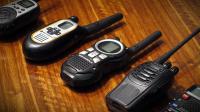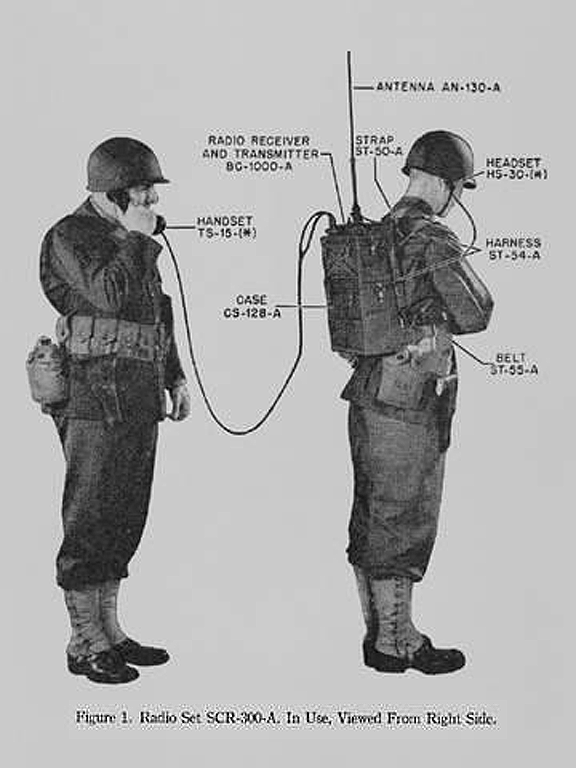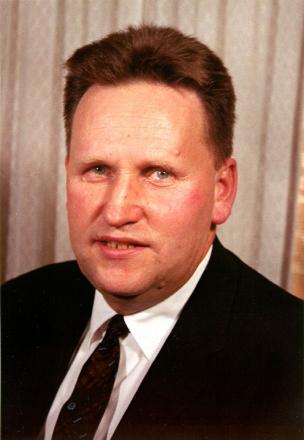He graduated from WUT in Poland and invented the Walkie-Talkie in America
It’s June 1939. Henryk Magnuski, a 30-year-old employee of the National Telecommunications and Radio Technology Centre, leaves for New York to see how Americans work on state-of-the-art radio transmitters. He doesn’t know that several months later World War II would begin, changing the course of his life.
The conflict meant that Henryk could not return to Poland. He could, however, advance his professional career. In 1940, he was hired by Galvin Manufacturing Corporation (GMC), which became Motorola seven years later. The talented Polish engineer, who studied telecommunications at the Warsaw University of Technology (he graduated in 1934) and led the team designing military transceivers at NTRTC, quickly showcased his abilities in the United States.
First Step to Fame
His first important project in exile was the SCR 536 hand-held radio transceiver. The device was named handie-talkie. Following the nature of these times, it was meant for military use. Thanks to this device, soldiers could easily and safely communicate with each other. The main advantages of this radio transceiver included low weight (approx. 2 kg) and durability. It could even be – if necessary – submerged in water for a short period.
The success of the invention is echoed by the number of devices manufactured by GMC since December 1941 until the end of World War II, which was over 100 thousand.
Ground-breaking Invention
However, another device turned out to become Magnuski’s masterpiece – the SCR 300 radio transceiver. Its weight was 16-17 kg, which means it was much heavier than a hand-held radio transceiver, but its range was also much larger – approx. 15 km. Previously, such devices had to be transported by tanks, and sometimes even tanks turned out to be too small. And the Polish engineer created a radio transceiver that any soldier could move by himself in a dedicated backpack. And that’s the reason for its name – walkie-talkie. In the Discovery film, Morgan Burke, grandson of Donald L. Hings, a Canadian inventor who created a two-way portable radio system before Magnuski, said that it was the name used by journalists during World War II.
What’s important, the Polish engineer’s device could be manually tuned to various frequencies.
Thanks to all these advantages, it allowed efficient communication between different military branches: artillery, armoured forces and infantry.
Approx. 43 thousand walkie-talkies manufactured by GMC were in use by the American army since 1943 during military operations conducted in Europe and the Pacific.
Henryk Magnuski’s invention is described as ground-breaking by World War II analytics. Wireless communication and, therefore, easier communication between soldiers, were important for building the American military advantage.
It’s a great irony that a man born and raised in the country where the conflict began, first, thanks to a solid amount of chance, escaped the turmoil of war, and then found himself in the middle of it anyway. Not as a heroic soldier, however, but as a designer and visionary.
Forever an Emigrant
The Polish engineer did not stop with hand-held and backpack radio transceivers. He also designed the AN/CPN-6 radar radio beacon, which was used by the US Navy. It helped pilots to return to carriers in case of limited visibility
After the war, Henryk did not return to his fatherland. He remained in the United States and continued to work for Motorola. His projects included cavity resonators and their use as input filters in microwave receivers (e.g. in the “Sensicon” receiver), and designing microwave transceiver stations for multiplex telephony, television and data transmission.
He also worked on government projects, such as the design of the AN/USC-3 SSB radio transceiver, RADAS, the Deltaplex I tropospheric communications system, and the AN/TRC‑105 device.
Henryk Magnuski’s scientific output consists of 30 patents in total, and of several dozen papers (written individually or with other scientists). They concern ultra-short and microwave radiocommunications.
The inventor died in the United States in 1978. In 2006, he was inducted into the Illinois Engineering Hall of Fame. His memory was also celebrated at the University of Illinois at Chicago. One of their chairs is named after Henryk Magnuski.
Agnieszka Kapela
Office for Promotion and Information
________________________
Based on
“Walkie Talkie History”, https://www.youtube.com/watch?v=Yp5j2mn9lU0, last accessed: 10 November 2016
Jakub Wołosowski, Poznajcie Polaka, który stworzył Walkie-Talkie i pracował dla Motoroli podczas II wojny światowej – INNHistoria, cz. I [Meet the Pole Who Created Walkie-Talkie and Worked for Motorola During World War II – INNHistoria, part 1], http://innpoland.pl/119527,innhistoria-poznajcie-polaka-ktory-stworzyl-walkie-talkie-i-pracowal-dla-motoroli-podczas-ii-wojny-swiatowej, last accessed: 9 November 2016
Robert Przybylski, Polska Walkie-Talkie i inne [Polish Walkie-Talkie and Others], http://www.rp.pl/artykul/1005611-Polska-Walkie-Talkie-i-inne.html#ap-1, last accessed: 9 November 2016
Tomasz Turejko, Polacy zmieniają historię wojskowości [Poles Change the Military History], http://jagiellonski24.pl/2016/08/15/polacy-zmieniaja-historie-wojskowosci/, last accessed: 9 November 2016
Radioelektronicy polscy: Henryk Magnuski [Polish Radioelectricians: Henryk Magnuski], http://sp2put.utp.edu.pl/radioelektronicy/magnuski_h.htm, last accessed: 10 November 2016










